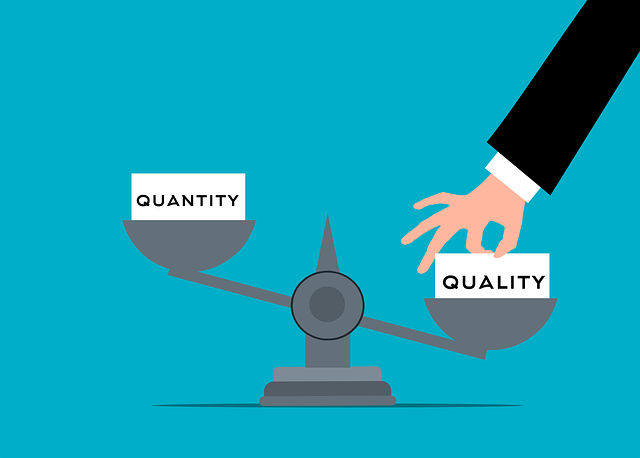Wegovy vs Ozempic: A Comprehensive Comparison for Long-Term Weight Management
Both Wegovy and Ozempic, GLP-1 analogue drugs, offer effective long-term weight management for obese or overweight adults with comorbidities. They work by slowing digestion, increasing satiety, and reducing hunger. While Wegovy is administered weekly and offers faster initial weight loss, Ozempic is once-weekly and regulates glucose levels. Their side effect profiles differ; Wegovy causes GI issues while Ozempic may lead to respiratory problems. Patient satisfaction varies, with Wegovy praised for convenience and Ozempic for appetite suppression. Cost and accessibility also differ; Wegovy requires medical supervision, while Ozempic is over-the-counter. Personalized treatment considerations based on needs and lifestyle are crucial when choosing between these innovative weight management options.
“In the realm of long-term weight management, Wegovy and Ozempic have emerged as powerful contenders, each offering unique benefits in the battle against obesity. This comprehensive guide delves into an extensive comparison of these two groundbreaking treatments. From understanding their mechanisms to examining side effects, patient experiences, and cost-effectiveness, we explore every facet of Wegovy versus Ozempic. By analyzing clinical studies and weighing future prospects, readers will gain valuable insights to make informed decisions regarding their long-term weight loss journeys.”
Understanding Wegovy and Ozempic: A Comprehensive Overview

Wegovy and Ozempic are both prescription medications designed for long-term weight management in adults with obesity or overweight, with a high risk of related comorbidities. They belong to a class of drugs known as semi-synthetic analogues of glucagon-like peptide-1 (GLP-1), which mimic the effects of a natural hormone in your body that helps regulate blood sugar and appetite.
These medications work by slowing down digestion, increasing feelings of fullness, and reducing hunger. Wegovy (semaglutide) is administered through weekly injections, while Ozempic (semaglutide) is taken as a once-weekly subcutaneous injection. Both have shown significant effectiveness in aiding weight loss when combined with a reduced-calorie diet and increased physical activity. The comparison between Wegovy versus Ozempic involves examining their safety profiles, efficacy, convenience, and potential side effects, all of which are crucial factors for patients considering these long-term treatment options.
Long-term Efficacy: Comparing Weight Loss Results

In terms of long-term efficacy, both Wegovy and Ozempic have demonstrated significant weight loss results when used for extended periods. Clinical trials have shown that both medications can help individuals achieve substantial reductions in body weight over time. When comparing Wegovy versus Ozempic, studies indicate that Wegovy may offer a slightly faster initial rate of weight loss. However, the difference is often minimal, and both treatments prove effective for maintaining long-term weight management.
Over an extended period, patients on these medications typically experience continued weight loss, with some even reaching their goal weights. The effectiveness of each treatment can be attributed to their unique mechanisms of action. Wegovy, with its appetite-reducing properties, helps individuals consume fewer calories, while Ozempic’s effects on glucose regulation contribute to overall metabolic changes that support weight management.
Side Effects and Tolerability: A Deep Dive

When comparing Wegovy and Ozempic, understanding their side effect profiles is crucial for patients and healthcare providers alike. Both medications are weight-loss drugs that work by mimicking natural hormones in your body, but they can have distinct impacts on different individuals. While Wegovy (semaglutide) has been associated with gastrointestinal issues like nausea, vomiting, and diarrhea, Ozempic (semaglutide) may be more likely to cause respiratory side effects such as shortness of breath or pneumonia. It’s important to note that these drugs are generally well-tolerated by most users, but individuals should closely monitor their bodies’ reactions.
The tolerability of Wegovy versus Ozempic can depend on several factors, including dosage adjustments and individual patient characteristics. Patients on either treatment may require close monitoring for adverse events, especially during the initial stages. Additionally, as with any medication, there’s a chance of developing hypersensitivity reactions or experiencing changes in metabolic rates, which could impact overall health outcomes. Understanding these potential differences is essential for making informed decisions regarding long-term treatment plans.
Patient Satisfaction and User Experience

Patient satisfaction and user experience are critical aspects when considering long-term treatment options for weight management, such as Wegovy and Ozempic. Both medications have shown promising results in clinical trials, but patient feedback offers valuable insights into their real-world performance. In terms of user experience, Wegovy users often praise its convenience, with once-weekly injections reducing the daily hassle compared to multiple insulin shots or frequent medication intakes required by other weight management drugs. This simplicity can lead to higher adherence rates and improved patient satisfaction over time.
However, Ozempic stands out for its potential to enhance overall well-being. Many patients appreciate its ability to suppress appetite effectively, leading to better control of calorie intake. Additionally, some users report a more gradual onset of effects compared to Wegovy, which may provide a smoother weight loss journey. Despite the differences in user experiences, both medications have been regarded as game changers in the field of obesity treatment, offering sustainable weight management solutions for folks navigating a bustling world of health and wellness.
Cost Analysis: Wegovy vs Ozempic

When comparing Wegovy and Ozempic for long-term treatment, cost analysis plays a significant role in patient decision-making. Both medications have demonstrated efficacy in weight management, but their pricing structures differ, making direct comparisons crucial. Wegovy, with its once-weekly injection, offers convenience and potentially lower overall costs due to fewer doses required over time. On the other hand, Ozempic, administered once daily, might initially appear more expensive, as patients would need to purchase a larger quantity of vials or prefilled syringes.
However, deeper examination reveals that the cost-effectiveness of each depends on various factors, including insurance coverage and pharmacy discounts. Patients should consider not only the out-of-pocket expenses for the medication but also potential savings from reduced healthcare costs associated with improved metabolic health over the long term. In the battle between Wegovy versus Ozempic, a thorough evaluation of these financial aspects can help individuals make informed choices tailored to their budgets and health goals.
Access and Availability: Where to Acquire Each Treatment

When comparing Wegovy and Ozempic, understanding access and availability is crucial for patients considering long-term treatment options. Both medications are FDA-approved for weight management, but their acquisition processes differ. Wegovy, also known as semaglutide, is typically prescribed by healthcare providers and can be obtained through specialized clinics or pharmacies that cater to prescription medications. This route ensures patients receive the drug under medical supervision, with regular check-ins and monitoring.
In contrast, Ozempic (also a semaglutide medication) is more readily available over-the-counter in many regions, allowing patients to purchase it directly from retail pharmacies. While this accessibility makes Ozempic more convenient for some, it’s essential to note that direct purchasing may skip critical medical consultations and monitoring, which are vital for managing potential side effects and adjusting dosages accurately. Thus, the choice between Wegovy and Ozempic should consider both personal preferences for access and the importance of professional guidance in long-term treatment.
Clinical Studies and Research Findings

Clinical studies have provided valuable insights into the long-term efficacy and safety of both Wegovy and Ozempic for weight management. In head-to-head comparisons, research has shown that while both medications are effective in reducing body weight, there are subtle differences between them. The studies reveal that Wegovy, with its once-weekly administration, offers a convenient dosing schedule, making it an attractive option for patients seeking long-term adherence to their treatment plan. On the other hand, Ozempic, delivered once weekly, demonstrates consistent weight loss over extended periods, indicating its potential for sustained results.
These research findings further highlight unique characteristics of each medication. Wegovy’s rapid action and ability to curb hunger have been well-documented, while Ozempic’s effect on glucose regulation in individuals with type 2 diabetes adds a layer of versatility to its application. The comparison between these two weight management drugs underscores the importance of personalized treatment approaches, where healthcare professionals can guide patients toward the option that best aligns with their individual needs and lifestyle preferences.
Future Prospects and Emerging Trends

As the field of diabetes management continues to evolve, future prospects and emerging trends in long-term treatment comparisons offer exciting possibilities for patients. The ongoing evolution of pharmacological interventions, such as Wegovy (semaglutide) and Ozempic (semaglutide), will likely shape these trends. Both medications have demonstrated significant efficacy in weight management and glucose control, with their dual actions on both appetite regulation and insulin secretion.
The future may see a greater emphasis on personalized treatment approaches, tailoring these medications to individual patient needs based on various factors. Additionally, the integration of digital health technologies, including mobile apps and remote monitoring systems, could enhance patient engagement and outcomes. These advancements promise to improve patient quality of life, reduce healthcare costs, and ultimately drive better diabetes management in the long term, providing a promising outlook for patients navigating Wegovy versus Ozempic.
